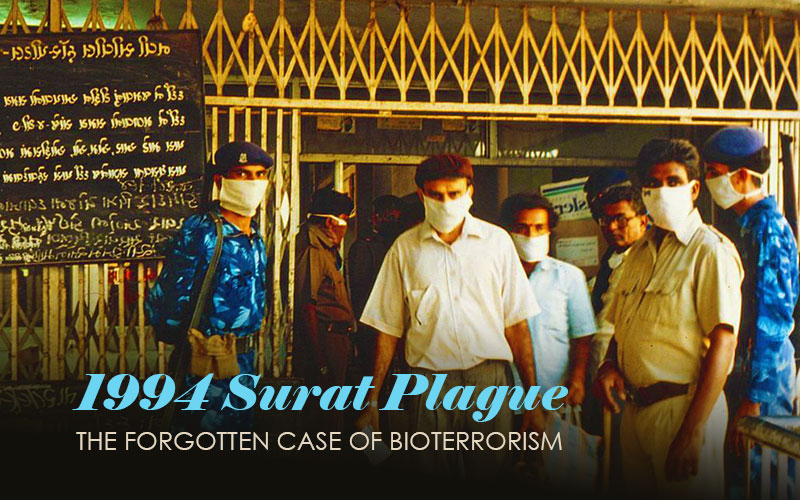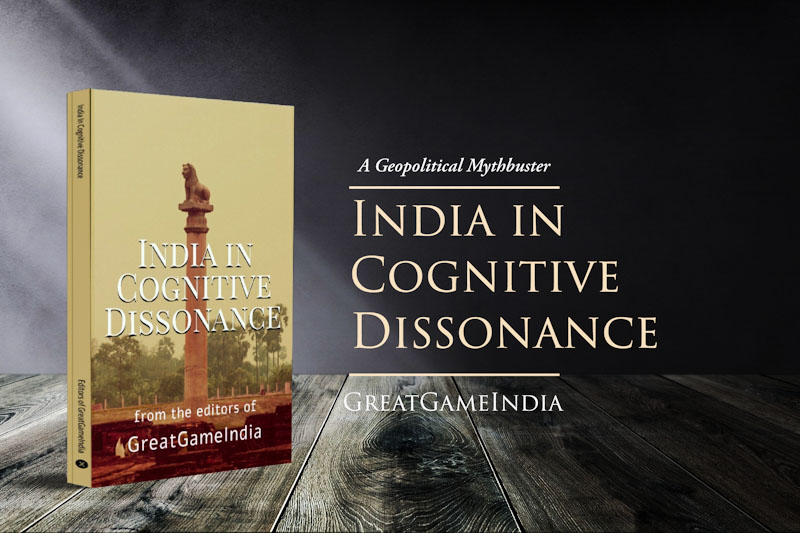In major development Luc Montagnier, a Nobel Prize winning French virologist has confirmed results of study conducted by Indian scientists concluding that COVID-19 was engineered with HIV (AIDS) like insertions as published by @GreatGameIndia in February.greatgameindia.com/nobel-prize-wi…
The plague outbreak in the western Indian city of Surat in 1994 has been mired in controversy just as COVID-19. The origin of the outbreak is still a mystery. Indian defense establishment believes the 1994 Surat Plague is a case of bioterrorism. Numerous media outlets at the time reported the involvement of American Center of Disease Control and Prevention (CDC). It was suspected that the germ with an extra protein ring was developed by a CDC lab in Almaty, Kazakhstan.
- EXCLUSIVE: Coronavirus Bioweapon – How China Stole Coronavirus From Canada And Weaponized It (watch here Visualizing The Secret History Of Coronavirus)
- Watch the exclusive interview of Bioweapons Expert Dr. Francis Boyle on Coronavirus Biological Warfare blocked by the Deep State
Contents [hide]

1994 Surat Plague
In the middle of September, 1994, at a time of heavy downpour the Deputy Municipal Commissioner of Health (DMCH) for Surat city received an important report. A patient had died seemingly due to pneumonic plague. 56 people died in the following two weeks in Surat and Beed in an outbreak that is remembered for the panic it caused. Close to a half of the city of 1.2 million people fled Surat for fear of the plague and of being quarantined.
At the time, medical authorities were unable to isolate and culture the bacterium, Yersinia pestis. Even though the Indian Council of Medical Research (ICMR) declared it a pneumonic plague a year later, suspicion lingered as to the origins and the nature of the disease.
Controversy over the Origin
Satnam Singh, former Programme Director at the World Health Organisation (WHO) office in Delhi, brought forth various reports of it not being the plague – by an expert committee appointed by the Gujarat government in 1995 and another by a committee under the chairmanship of N.R. Mehta, retired professor of community medicine in Surat Medical College.
A paper published in the U.S. Journal of Public Health Policy in 1997 and a declaration by the Indian Association of Medical Microbiologists that “there is not even a single convincing evidence of plague either in Surat or Beed” were also mentioned.
Role of US CDC
Numerous publication at the time had reported on the investigations of the Surat and Beed dengue at the time. Indian scientists were worried that there was a connection between a research on new germs and germ detectors at the U.S. CDC lab in Atlanta to the extra protein ring found in the Surat germ – which could only have been inserted artificially.
Reporting on the controversy over whether novel coronavirus leaked out from a biowar lab in Wuhan, the New Delhi Bureau Chief of The Week, R. Prasannan wrote:
During the 1994 plague outbreak in Surat and Beed, it was found that the germs had an extra protein ring which could only have been inserted artificially. Indian scientists had raised concerns about a US biowar experiment having gone awry. THE WEEK had carried reports giving details of germ war research being carried on in labs under the Centre for Disease Control in Atlanta and about a newly developed germ detector being tested. The US embassy had denied the allegations.
Coincidentally, the same history seem to playing out with regards to Coronavirus as well. Indian scientists discovered 4 HIV (AIDS) insertions in the spike protein of Coronavirus. The study concluded that it is unlikely for a virus to have acquired such unique insertions naturally in a short duration of time. Although, the research was quickly shot down by vested interests the Nobel Prize winning French virologist and the discoverer of HIV virus Luc Montagnier himself has confirmed the study.
There were also reports regarding the plague outbreak in Surat suspecting that the germ was developed by a CDC lab in Almaty, Kazakhstan. Recently, the US Embassy in Kiev was caught in the center of a brewing political scandal regarding its biolab.
In March, Iranian doctors penned a letter to the leaders of Afghanistan, Georgia, Iraq, Kazakhstan, Kyrgyzstan and Pakistan to destroy all US biololabs in their countries, claiming that the coronavirus pandemic may have been spread deliberately as a form of biological warfare.
The CDC has quite a history of mishaps being kept confidential. From a Freedom of Information Act (FOIA) request in 2015, USA TODAY obtained heavily redacted documents of laboratory incidents at the CDC labs in United States. Any incident involving a deadly pathogen such as anthrax, ebola, plague or avian virus, were partly or fully redacted. Incidents included failure of safety equipment, multiple exposures to viruses & bacteria and losing a box of deadly and highly regulated influenza specimens.
In a most shocking development, several countries have reported that testing kits, protective equipment and medical devices sent to them to combat COVID-19 were itself found to be contaminated with #Coronavirus.
So WHO is contaminating test kits?greatgameindia.com/who-is-contami…
A 2016 investigation by the same publication had revealed that the CDC was among a group of biolab operators that had the worst regulatory histories in the United States. Infact, in early March, this year the CDC lab in Atlanta while manufacturing coronavirus testing kits was itself caught to be contaminated by Coronavirus. On top of it, CDC officials tried to cover it up, prompting an investigation by the U.S. Department of Health and Human Services (HHS).
Threat of Bioterrorism
In a 2001 article, Colonel Anantasubramanian Nagendra, Head of Microbiology at the Armed Forces Medical College in Pune issued a clarion call for India to “wake up” to the possibility of biological warfare attacks on her population. For too long and too often, bioterrorist attacks were being passed over as natural disease outbreaks or outbreaks of unknown origin, or classified as emerging infectious diseases.
National Institute of Communicable Diseases (NICD) Director, Dr Kamal Datta laid out his case that “suspicious” outbreaks (as shown below) in India’s recent history were being glossed over and that these “newsmen’s hypotheses,” not be entirely disregarded.
- 1965 – outbreak of scrub typhus in North East India during the Indo-Pakistan war
- 1994 – outbreak of pneumonic plague in Surat and Beed, Gujarat
- 1996 – outbreak of dengue in Delhi (10,252 cases, 423 deaths) “dengue-2”
- 2001 – outbreak of unidentified encephalitis in Siliguri, Eastern India (66 cases, 45 deaths)
Molecular characterization studies on the dengue-2 virus samples were done by the NICD and by AIIMS and samples from 1996 and 1965 were compared. The results indicate that the 1996 sample was more virulent and mutated 30 times over, but there was barely a 10% divergence.
EXCLUSIVE#Coronavirus Bioweapon Thread
How China Stole Coronavirus From Canada And Weaponized Itgreatgameindia.com/coronavirus-bi…
The Director suspected external influences, saying,
“We never had such a major episode like the 1996 dengue haemorrhagic fever outbreak from any part of the country with so many cases at one particular point in time. Has it come from outside India?”
credit link: https://greatgameindia.com/1994-surat-plague-bioterrorism/






